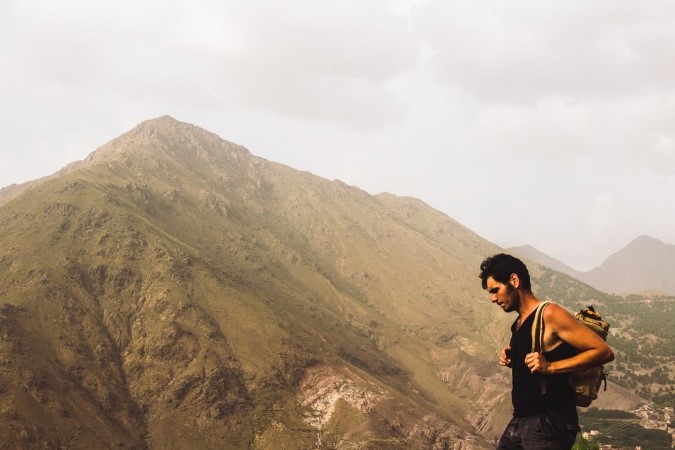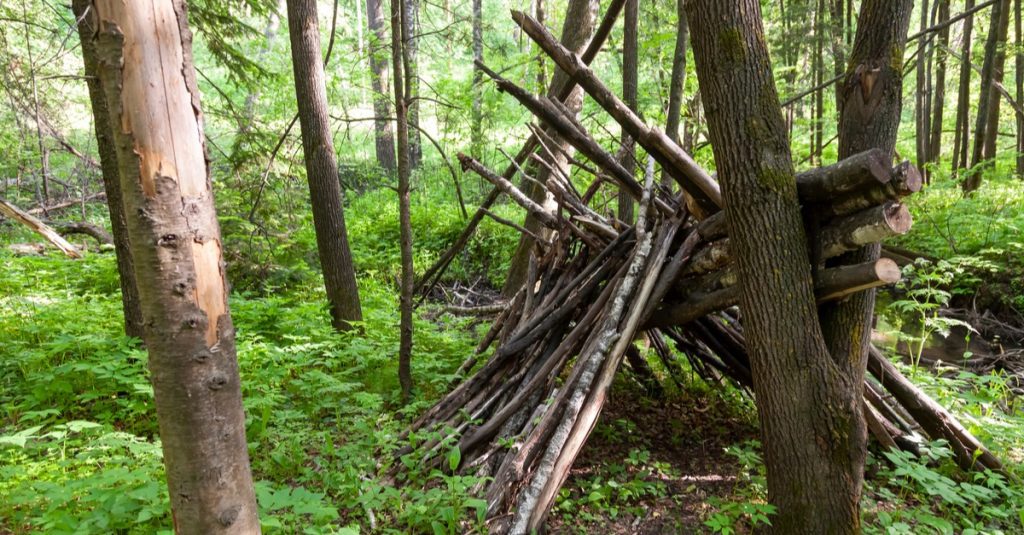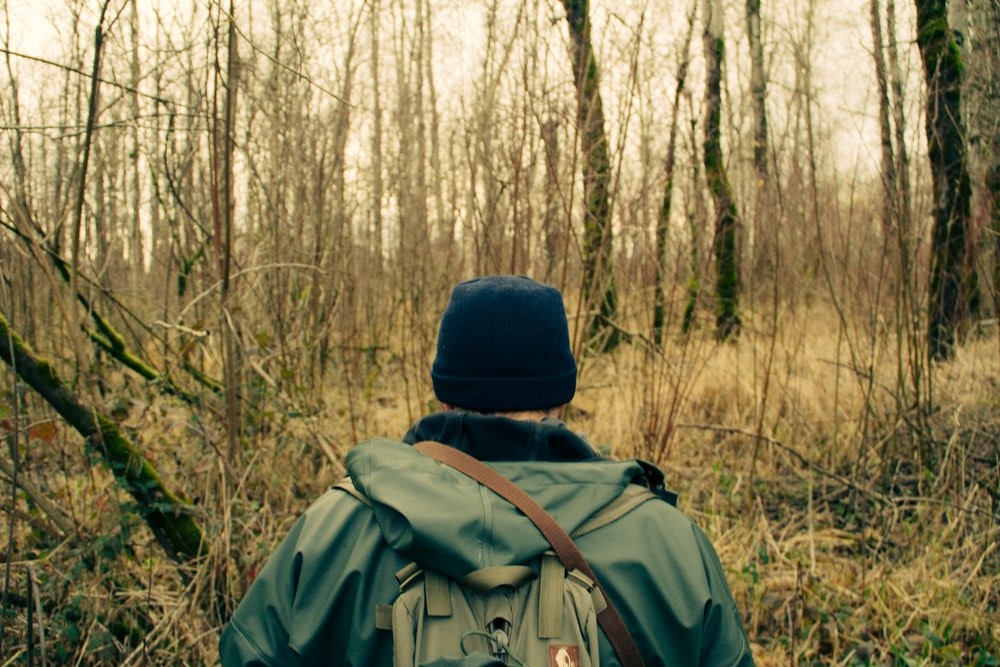Last Updated on February 20, 2023 by admin_hunter
While backpacking is an invigorating and healthy activity, it can still be really risky. You take a risk going out into the wilderness and encountering sudden storms, sketchy terrain, and large predators.
A survival backpack, also known as a bug-out bag or go-bag, is a backpack filled with essential items that would be necessary for survival in an emergency situation. Here are some reasons why you should have a survival backpack:
- Emergency Preparedness: In case of a natural disaster, power outage, or other emergency, having a survival backpack can provide you with the necessary tools and supplies to sustain yourself until help arrives.
- Mobility: A survival backpack is easy to carry and allows you to move quickly and efficiently in case you need to evacuate or leave your home in a hurry.
- Self-Sufficiency: A well-stocked survival backpack can provide you with the resources you need to survive for a few days or even weeks without outside assistance.
- Personalized Supplies: A survival backpack can be customized to fit your specific needs and preferences, such as including any necessary medications or equipment.
- Peace of Mind: Knowing that you have a survival backpack ready and available can give you peace of mind, knowing that you are prepared for any potential emergency.
Overall, having a survival backpack is an important part of emergency preparedness, providing you with the necessary tools and resources to help ensure your survival in case of an emergency situation. If you’re careful starting out, you’re going to pick up quite a few tricks that will help keep you safe while you’re out backpacking.
So, when you’re survival backpacking, what are some of the skills that you should know? In this article, we’re going to talk about six of those skills.
Utilizing a Compass
Most backpackers without a lot of experience think of a compass as a relic that was cast aside with the rise of new technology.
Even more people have never heard of a compass. But a compass and a map are considered to be the most essential navigational tools by experienced outdoorsmen. While it makes sense why most people have never touched a compass before, what with the rise of technology and the ability to download maps onto our phones.
But batteries can die, and geography can get in the way of cellular and GPS signals. If you get lost in the woods, there’s absolutely no guarantee that you’ll be able to connect to one of these apps. Then you’ll be in big trouble – unless you have a compass and map.
That’s why knowing how to use a compass is survival backpacking skill number one.
Water Collection
Knowing how to collect water is another one of those survival backpacking skills that you should know. When you’re out in the woods, you aren’t going to encounter spigots and fountains very often. If you plan carefully and understand the basics of water collecting, you won’t have to bring much water to start with.
Once you locate a water source, you’ll need to collect water, filter it, and then purify it. This requires at least two containers. You can filter out the solid materials using a bandana or coffee filter as you start passing water from one container to another. Then, to purify the water, you’ll need to use a portable water filtration pump, boil the water, or treat it with Iodine tablets.
Never drink unpurified water, especially from stagnant water. This is because the stagnant water doesn’t get any filtration because it’s not flowing along rocks and debris.
Building a Fire
Knowing how to build a fire is very important if you’re going backpacking, and there are several ways that you can get a spark that will build into a campfire.
Preparation is key to getting your fire started right without wasting fuel or time. If you have a lighter or matches, you’ll generally want to set your tinder up under a teepee of kindling so the flame will catch quickly. Once that kindling is burning fast and hot, you can start adding your fuel wood. Just ensure that you’re leaving enough room for the flame and air to circulate and not smothering the fire by adding too much wood.
Tying Knots
Knowing how to tie a knot will be the difference between sleeping without a shelter and sleeping under a shelter. Or you can use your rope tying skills for securing a hammock, tying down your gear, suspending food where bears can’t get to it, and more.
There are a ton of videos online about how to tie knots, if you have time, check out one of them to make sure that your survival backpacking skills are ready.

Signaling Rescuers
It doesn’t matter how experienced you are when you head out backpacking, things aren’t always going to go as planned. You never know when you’re going to need survival backpacking skills to signal rescuers.
You’ll be much more prepared if you have the following items:
- Whistle: It might seem silly to carry around a whistle, but they take up no weight and can be heard about a half mile away. If you’re in trouble, you can whistle out morse code for S.O.S. or you can signal to your group that you’ve been separated.
- Small Mirror: You can use the small mirror to reflect the sun right into your potential rescuers eye. This is great to have if you have a rescuer in a noisy vehicle at a distance.
- A Headlamp: Sunlight isn’t going to help you at night. Because of this, you should always have a fully charged flashlight when you’re out backpacking. You can use it to signal that you’re in trouble.
- Bright Clothing: If you’re in a pinch, you can use bright clothing as a flag. Rescue pilots will generally check out anything out of the ordinary on the ground and seeing a bright shirt could be all they need to rescue you.
Temporary Shelter

Sometimes when you’re out backpacking, a storm is going to roll in. When you have all the stuff you need to keep you alive while out on your back, you really need to keep dry. Hopefully, you’ll have a tent in your bag and can quickly click together the poles.
But if you don’t, then hopefully you have some tarp and rope. You can set up a temporary shelter by finding two trees about eight feet apart and tie a line between the trees about 4.5 feet from the ground, then hang your tarp over it.
Conclusion
Backpacking can be a relaxing and invigorating experience, but it can also turn dangerous. If you aren’t prepared, then you could be in serious danger, that’s why you need to have these survival backpacking skills in your back pocket.
Hopefully, this guide has shown you the most important survival backpacking skills that you should know when you go out into the wilderness. You should know how to use a compass and map, collect water, build a fire, signal for help, and build a temporary shelter. If you know how to do these things, then you’re all set for your next backpacking trip.

